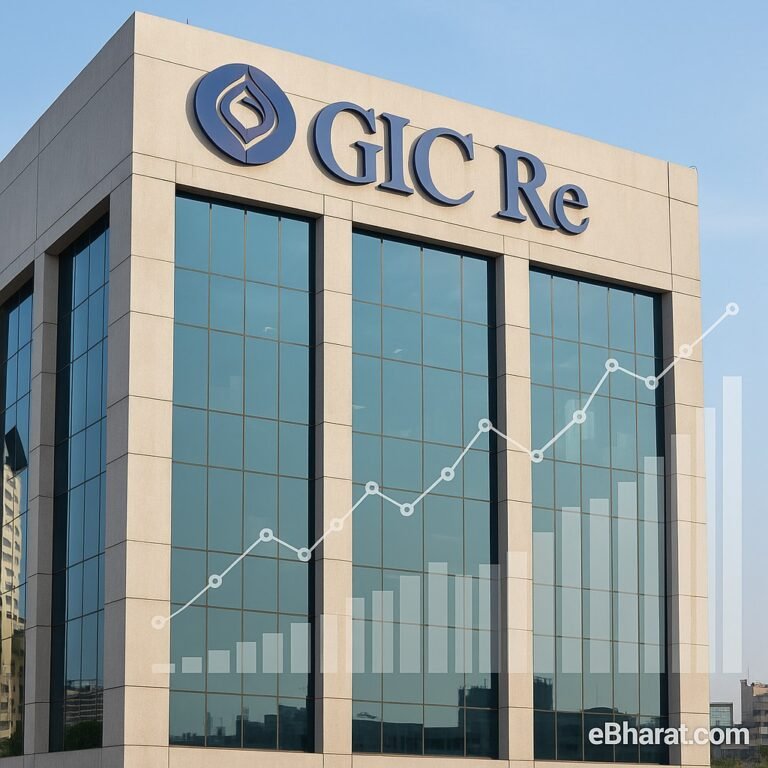
Introduction
India is one of the world’s fastest-growing insurance markets. With a population of over 1.4 billion, rising income levels, rapid urbanization, and increasing awareness of financial protection, the insurance industry is expanding at double-digit growth rates. But the real strength behind this growth comes from reinsurance. Foreign reinsurers such as Munich Re, Swiss Re, SCOR, Hannover Re, and Lloyd’s Syndicates have shown keen interest in India over the past decade. But why? Let’s understand what makes India so attractive for global reinsurers.
Size and Potential of the Indian Market
- India is projected to become the 6th largest insurance market by 2032.
- Insurance penetration (premium as % of GDP) is still only around 4%, much lower than global averages.
- This means massive room for growth, especially in health, life, and crop insurance.
- For reinsurers, more insurance growth means more reinsurance opportunities.
Rising Risk Exposure
- Climate Change – Floods, cyclones, and heatwaves are increasing in intensity, creating high demand for catastrophe reinsurance.
- Health Risks – Post-pandemic, health insurance claims are growing rapidly. Reinsurers provide support to manage sudden spikes.
- Infrastructure Growth – With mega projects like highways, ports, and renewable energy plants, insurers require reinsurance to cover large sums assured.
Global reinsurers see India as a market where risk transfer needs are growing rapidly.
Regulatory Reforms by IRDAI
- In 2016, IRDAI allowed Foreign Reinsurance Branches (FRBs) to operate in India.
- Cross-border reinsurers (CBRs) are also permitted, subject to strong credit ratings (minimum A-).
- Recent reforms simplified the order of preference system, making it easier for insurers to place business with foreign reinsurers after offering it first to GIC Re.
These changes made India more accessible to global reinsurers.
Role of GIC Re and Competition
- GIC Re remains the dominant player, but its market share has reduced from ~74% in 2019 to ~51% in 2023.
- Foreign reinsurers now account for nearly half of India’s reinsurance placements.
- Healthy competition benefits insurers and policyholders by improving pricing, capacity, and product innovation.
Why India Appeals to Global Reinsurers
- Demographics – Huge young population means long-term demand for life and health products.
- Low Insurance Penetration – A “greenfield” market with vast untapped potential.
- Government Support – Schemes like PMFBY (crop insurance) and Ayushman Bharat drive reinsurance demand.
- Technology Adoption – India is rapidly digitizing insurance, making it attractive for reinsurers with advanced data models.
- Diversification – India provides reinsurers geographic diversification against risks concentrated in Europe or the US.
Challenges for Foreign Reinsurers
- Regulatory Preference for GIC Re: Indian insurers must first cede to domestic reinsurers.
- Price Sensitivity: Indian insurance market is very price-conscious, making margins thinner.
- Data Quality Issues: Inconsistent claims and weather data affect accurate risk pricing.
Still, the long-term benefits outweigh the challenges.
Outlook: The Road Ahead
- By 2030, India is expected to become one of the top five reinsurance markets in Asia.
- Foreign reinsurers are likely to expand their branch presence in Mumbai, tapping both life and non-life segments.
- Collaborations between Indian insurers and global reinsurers will lead to more innovative products, especially for climate, cyber, and health risks.
Why This Matters to Agents and Policyholders
- For Agents: More product variety and stronger claim security mean better sales opportunities.
- For Policyholders: More competition = better pricing and reliable coverage.
- For Insurers: Access to global capital ensures sustainability during disasters.
Become an Agent
As global reinsurers expand in India, the insurance industry is growing fast. Start your journey today with the HDFC Life agent network.
Apply NowLearn Reinsurance Basics
Curious about how reinsurance works and why India attracts global players? Explore our complete guide to understand the bigger picture.
Read Guide →












